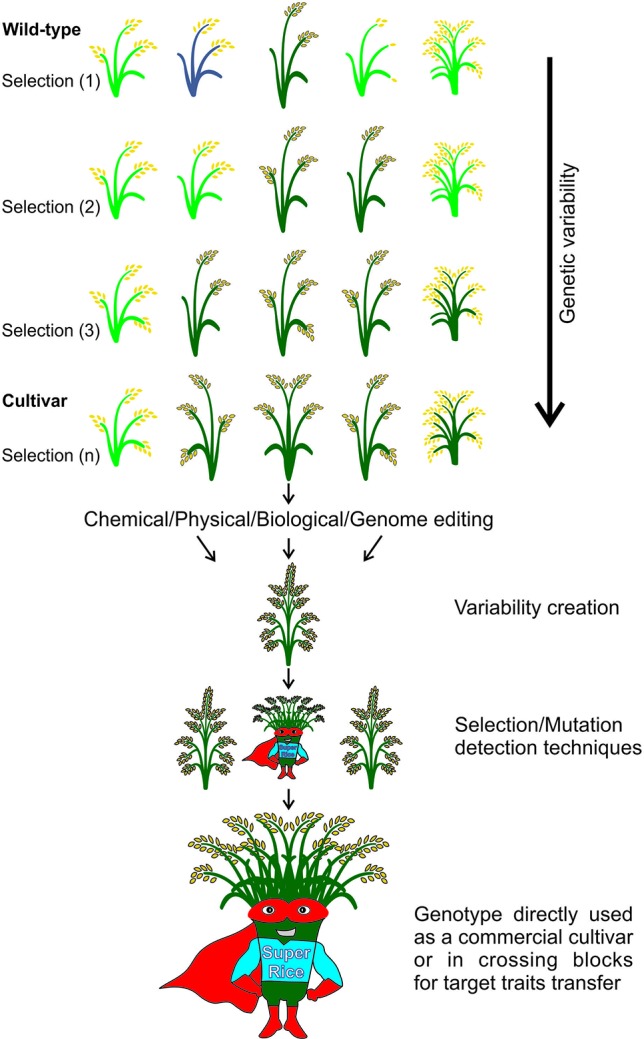Figure 8.

Strategies to generate variability in rice. The improved cultivars need to fulfill requirements, i.e., be adapted to the growing environments and please consumer taste. With the long-time selection for desired traits, the genetic variability is reduced, and genotypes decrease their value due to adaptation (i.e., environments change) or consumer taste (i.e., consumers change their habits) losses. To overcome this problem, the strategies of random or targeted mutations are applied to increase rice genome variations, generating new populations with different traits that can be selected according to the aim of the breeder. With this, the aim is to produce a super rice, which responds to environmental and market demands.
